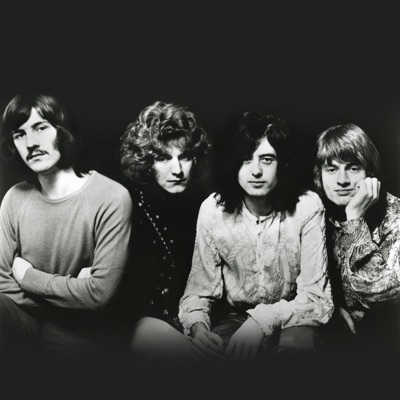

More albums from Jimi Hendrix
Jimi Hendrix's Popular Music Videos
Artist Playlists
About Jimi Hendrix
Artist Biography
About a week before Jimi Hendrix’s death in September 1970, an interviewer asked about his role in the invention of psychedelic music. Hendrix, who was as soft-spoken offstage as he was incendiary on it, laughed. Sure, you could call it psychedelic if you wanted: the trippy imagery; the wild, loud performances. But more than psychedelic, he explained, he was trying to get across what he called “a clash between fantasy and reality.” From the beginning, his music captured the outer reaches of a counterculture turning on to new chemicals, sounds, feelings, and social possibilities (“Purple Haze,” “Are You Experienced?”). But it also remained grounded in traditions of Black music carried over from his days as a guitarist on the chitlin circuit—blues, yes, but also smooth, Chicago-style R&B (“Have You Ever Been [To Electric Ladyland]”), the syncopations of funk (“Fire,” “Freedom”), and the naked expressivity of Southern soul (“The Wind Cries Mary”). No matter how adventurous he got (and how unprecedented he sounded), Jimi Hendrix came from—and spoke to—Earth.
Born John Allen Hendrix in Seattle in 1942 (and later renamed James Marshall Hendrix by his parents), he started his career as a sideman for artists like The Isley Brothers and Little Richard before moving to England in 1966, where he became an instant legend. (Everyone—Eric Clapton, Pete Townshend, Jeff Beck, everyone—has a story about the first time they saw Hendrix; Keith Richards later joked that in creating a style that nobody could copy but that inspired everyone to try, Hendrix nearly ruined the guitar.) In two years, he recorded three albums that set new standards for what blues-based rock could be. He made druggy, mind-bending music that came across like pop (1967’s Are You Experienced) and helped redefine the rock album as a kind of stylistic playground where artists could contrast moods, explore curiosities, and stretch their creative visions (1968’s Electric Ladyland). At the heart of even his fieriest music was a gentleness that registered, above all, as spiritual curiosity. A poem he wrote a few hours before his death in 1970 featured the lines “the story of life is quicker than the wink of an eye/The story of love is hello and goodbye.”
Born John Allen Hendrix in Seattle in 1942 (and later renamed James Marshall Hendrix by his parents), he started his career as a sideman for artists like The Isley Brothers and Little Richard before moving to England in 1966, where he became an instant legend. (Everyone—Eric Clapton, Pete Townshend, Jeff Beck, everyone—has a story about the first time they saw Hendrix; Keith Richards later joked that in creating a style that nobody could copy but that inspired everyone to try, Hendrix nearly ruined the guitar.) In two years, he recorded three albums that set new standards for what blues-based rock could be. He made druggy, mind-bending music that came across like pop (1967’s Are You Experienced) and helped redefine the rock album as a kind of stylistic playground where artists could contrast moods, explore curiosities, and stretch their creative visions (1968’s Electric Ladyland). At the heart of even his fieriest music was a gentleness that registered, above all, as spiritual curiosity. A poem he wrote a few hours before his death in 1970 featured the lines “the story of life is quicker than the wink of an eye/The story of love is hello and goodbye.”
Genre
Rock
Jimi Hendrix: Member of
Jimi Hendrix is also a member of, or has been a member of the following groups
Similar to: Jimi Hendrix
Discover more music and artists similar to Jimi Hendrix, like The Jimi Hendrix Experience, Led Zeppelin, Cream














![Watch Voodoo Child (Slight Return) [Live In Maui, 1970] music video by The Jimi Hendrix Experience & Jimi Hendrix Watch Voodoo Child (Slight Return) [Live In Maui, 1970] music video by The Jimi Hendrix Experience & Jimi Hendrix](/mkimage/image/thumb/Video114/v4/3e/1d/52/3e1d5293-e9ec-ef3b-de3b-aa39898f810a/8864487379640101.jpg/115x115mv.webp)


![Watch Izabella (Machine Gun: Fillmore East 12/31/1969) [Official Audio] music video by Jimi Hendrix Watch Izabella (Machine Gun: Fillmore East 12/31/1969) [Official Audio] music video by Jimi Hendrix](/mkimage/image/thumb/Video123/v4/05/17/35/0517350b-6065-0a04-dd51-08e1cace7542/8864460382470101.jpg/115x115mv.webp)
























